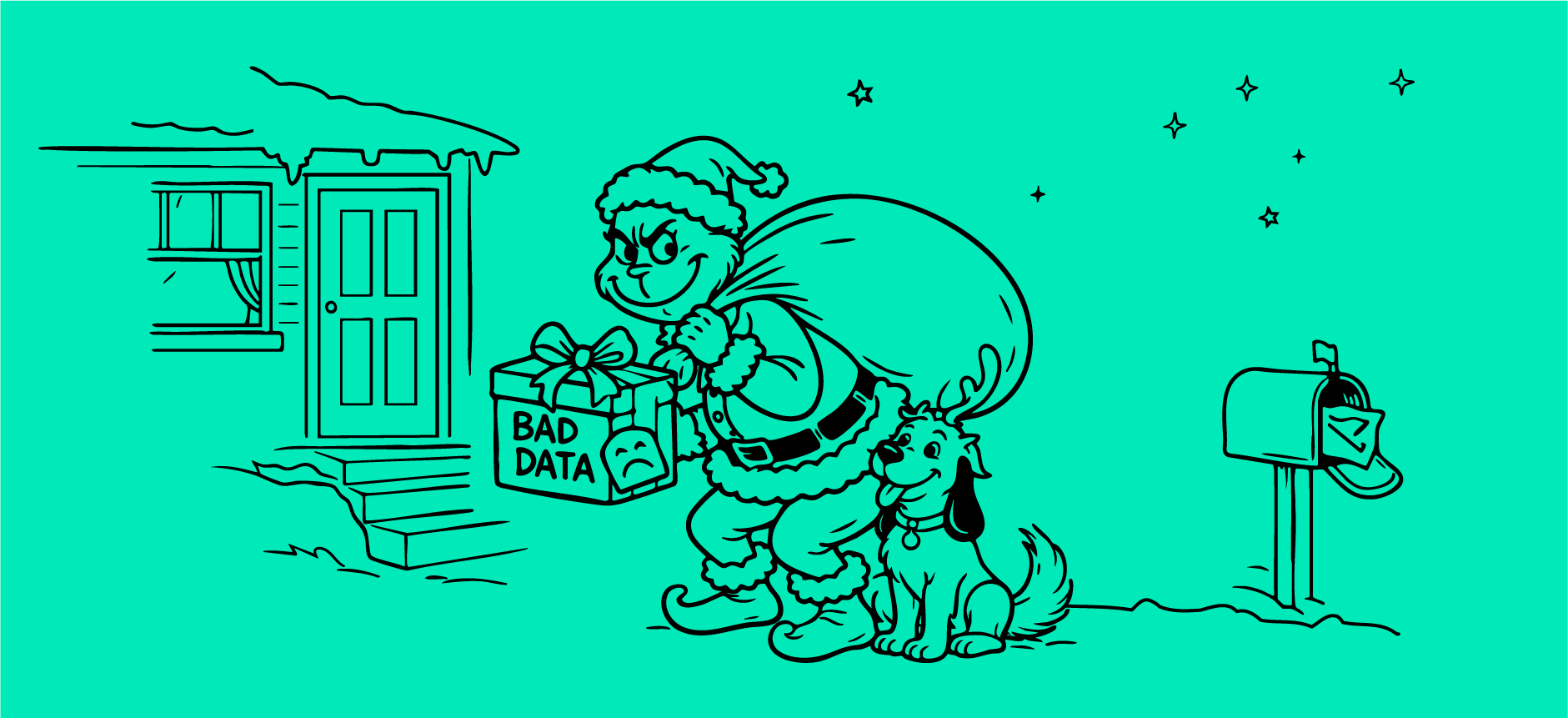Data Cleaning 101

Summary
- Data cleaning is essential for maintaining data integrity and making sound decisions.
- Cleansing data involves identifying and correcting errors, inconsistencies, and duplicates in data.
- Poor data quality can lead to costly mistakes and hinder business growth.
- Steps for cleaning data include understanding data sources, reviewing quality metrics, fixing issues, and validating accuracy.
- High-quality data leads to improved customer experiences, operational efficiency, and better decision-making.
Clive Humby, co-founder of Dunnhumby and a pioneer in the field of data science and customer data analytics, stated "Data is the new oil, but just like oil, it has to be refined before it can be of any use."
That's why data cleaning is fundamental to maintaining the integrity of an organization's data and ensuring that decisions based on the data are sound, accurate, and effective.
What is Data Cleaning?
Data cleaning involves the identification, correction, and removal of errors, inconsistencies, duplicates, and inaccuracies in your data in order to improve its quality, integrity, and consistency. It’s a time-consuming process, accounting for 80% to 90% of the work of data scientists. And while data cleaning is arguably the least rewarding data science task, it's highly-critical to the growth and competitiveness of the business.
Why is Data Cleaning Important?
Inaccurate or inconsistent data leads to erroneous conclusions, flawed strategies, and poor decision-making, which can be costly for organizations. In fact, Gartner estimates that poor data quality costs organizations, on average, a staggering $12.9 million annually.
Cleaning data improves its quality by resolving errors, correcting inconsistent formats, and eliminating duplicate records, making it more dependable for decision-makers to use when analyzing new opportunities, refining customer experiences, and protecting the company from unseen risks. The data cleansing process also helps organizations uncover hidden patterns and reveal insights obscured by inconsistencies and inaccuracies. Moreover, clean data also enhances the efficiency of data processing and analytics, enabling organizations to derive meaningful, trustworthy, and actionable insights that lead to better, more efficient outcomes.
How to Clean Your Data
By following a structured data cleaning process, your organization can improve the quality and integrity of your data, transforming it into a valuable asset that drives meaningful business insights and more informed decisions. Follow the steps below and you'll be well on your way to cleaner, more trustworthy data.
- Understand your data
Understanding what data you have - and where it's coming from - is an important first step when working to improve data quality. Identify your data sources so you know the purpose of the data as well as where it lives. Review the structure as well, including the format, columns, and data types so you are familiar with its structure.
- Review data quality metrics
Once you understand your data, the next step is to inspect for obvious issues such as blatant errors and inconsistencies. You can also review data quality metrics like those provided by Tamr to reveal missing values, duplicate records, or structural issues such as inconsitent formats. Data quality metrics also help you to monitor the status of your data so you can stay ahead of any data quality issues that arise.

- Fix issues
Perhaps the most obvious step in the process is to fix issues once you find them. There are a number of ways you can clean data, depending on the issues you uncover. First, correct and standardize inconsistencies. For example, many companies find that data users enter addresses and dates inconsistently, such as using "USA" vs. "United States." It's important to standardize how you want to capture these values so you can easily integrate your data for use in reporting. Next, remove duplicates and handle outliers. Otherwise, they will skew your results. And finally, fill in missing values. Using data enrichment capabilities, companies can tap into third-party sources to improve the quality and completeness of their data. Using Tamr's Unique IDs, companies can link their internal data with external data to find the sources that align best with business needs. Linked IDs can also match companies with trusted vendors in order to choose and add new, relevant columns based on selected external sources and attributes.

- Validate accuracy
The final step is to validate the quality of the freshly cleaned data. Using artificial intelligence (AI) is one way to automate the processes to review the accuracy of the data. But it's important to remember that automation alone isn't enough; you must also involve humans as well. Ensure that someone who knows and understands the data remains in the loop, as they can review the results, provide feedback, and make additional corrections as needed.
The Impact of Data Cleaning
The importance of having complete, high-quality data cannot be overstated. When data is good, decisions follow suit. Your customer experiences meet (or exceed!) expectations, new revenue opportunities come to light, operations become more efficient, and you can safeguard your business from unforeseen risks.
But don't take our word for it. See how a Fortune 500 Retailer used data cleaning to replace dirty, duplicate data with holistic, up-to-date customer review. Not only did they realize unified customer views, but they were also able to enhance customer experiences, improve business flexibility and responsiveness, and better target customers with offers aligned to their needs.
Clearly, having high-quality data is important. Data cleaning is an effective way to improve the integrity of your data so you can deliver the trustworthy insights everyone needs to drive better decisions. Using Tamr's AI-first approach to cleaning and mastering data, your organization can realize the value that accurate, comprehensive, and durable golden records provide.
Ready to learn more? Schedule a demo and we'll show you how Tamr makes your data better...so you can work smarter.
Get a free, no-obligation 30-minute demo of Tamr.
Discover how our AI-native MDM solution can help you master your data with ease!




